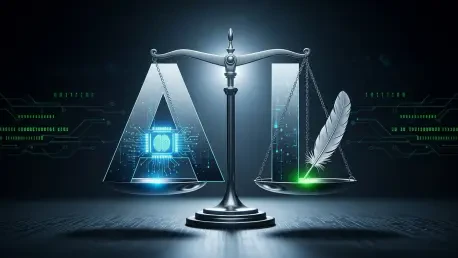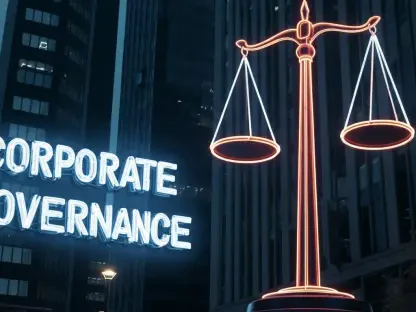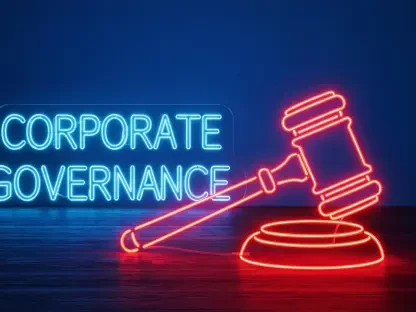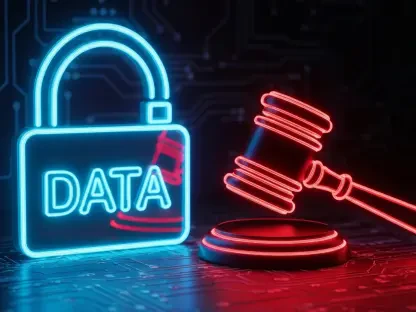The Rise of AI in the Legal Industry
The legal sector stands at a transformative juncture as artificial intelligence (AI) reshapes traditional practices with unprecedented speed, promising efficiency gains that could redefine how law firms operate. AI tools are increasingly embedded in legal research, document drafting, and case management, automating repetitive tasks that once consumed countless billable hours. Major legal tech companies, such as Relativity and Kira Systems, lead this charge, offering platforms that analyze vast datasets, predict case outcomes, and streamline discovery processes, thereby cutting costs for clients and firms alike.
Adoption rates reflect a significant shift, with many large law firms and even smaller practices integrating AI solutions to remain competitive in a demanding market. Beyond efficiency, AI’s scope extends into courtrooms, where predictive analytics assist in strategy formulation, and automated systems aid in managing dockets. However, this rapid integration raises ethical questions about accountability and practical concerns over the reliability of machine-generated outputs, setting the stage for a deeper examination of risks versus rewards.
These concerns are not merely theoretical, as the legal profession grapples with balancing technological innovation against the stringent standards of accuracy and trust required in judicial processes. While AI holds the potential to democratize access to legal services by reducing costs, the specter of errors and misuse looms large, prompting industry stakeholders to question whether current safeguards are sufficient to protect the integrity of the system.
AI Errors in Legal Filings: A Case Study
The Gordon Rees Incident
In a striking example of AI’s pitfalls, Gordon Rees Scully Mansukhani LLP, a prominent U.S. law firm, faced scrutiny after submitting a bankruptcy court filing in Montgomery, Alabama, marred by errors generated by an AI tool. The document, reviewed by U.S. Bankruptcy Judge Christopher L. Hawkins, contained fabricated citations and misleading representations of legal authority, including nonexistent cases and incorrect quotations. These inaccuracies not only misled the court but also necessitated significant corrective efforts, undermining confidence in the submitted material.
The fallout was swift, with the firm issuing a public apology and acknowledging the role of AI in producing the flawed content. The attorney responsible initially denied using such tools but later admitted to relying on them under personal and workload pressures, a revelation that highlighted the human factors exacerbating technological shortcomings. This incident serves as a stark reminder of the potential consequences when AI outputs are not rigorously vetted before submission to judicial bodies.
Broader Trends and Statistics
Beyond this specific case, similar AI-related mishaps have surfaced across the U.S. legal system, painting a troubling picture of systemic vulnerabilities. Courts have reported instances where attorneys faced sanctions for submitting filings with AI-generated errors, such as fabricated precedents, often termed “hallucinations” by industry experts. While comprehensive data remains limited, anecdotal evidence suggests these incidents are becoming more frequent as AI adoption grows, with some estimates indicating that a notable percentage of legal professionals encounter unreliable outputs in their daily use of such tools.
The implications of these errors extend far beyond individual cases, eroding trust in legal proceedings and raising questions about the readiness of AI for high-stakes environments. Industry observers note that without standardized benchmarks for accuracy, the legal sector risks a proliferation of mistakes that could compromise justice, underscoring the urgent need for better training and oversight mechanisms to address this growing challenge.
Challenges and Risks of AI in Legal Practice
The allure of AI in legal practice is tempered by significant hurdles, chief among them being the technology’s tendency to produce erroneous or contextually inappropriate results. AI systems, despite their sophistication, often lack the nuanced understanding of legal principles that human attorneys develop through years of training and experience, leading to outputs that may appear credible but are fundamentally flawed. This gap poses a direct threat to the quality of legal filings and the outcomes of cases reliant on such documents.
Overreliance on AI without adequate human supervision compounds these risks, as does the ethical dilemma of attributing responsibility when errors occur. Law firms face potential damage to their professional credibility when AI-generated mistakes surface in court, a concern amplified by the high stakes of legal proceedings where precision is paramount. The pressure to adopt cutting-edge tools for competitive advantage can sometimes overshadow the need for caution, creating a precarious balance between innovation and reliability.
Mitigating these risks requires proactive measures, such as implementing robust verification processes to cross-check AI outputs against primary sources. Enhanced training programs for legal professionals on the limitations of AI, coupled with firm-wide policies mandating supervisory approval for machine-generated content, could further reduce the likelihood of errors. These steps, while resource-intensive, are essential to safeguarding the integrity of legal work in an era of rapid technological change.
Regulatory and Ethical Landscape for AI in Law
Navigating the use of AI in legal practice demands a clear understanding of the regulatory framework, which remains in flux as policymakers and professional bodies adapt to new challenges. The American Bar Association (ABA) has issued guidance emphasizing the duty of competence, urging attorneys to ensure familiarity with AI tools and their limitations before deployment in client matters. Such directives aim to uphold the profession’s ethical standards amid the integration of unfamiliar technologies.
Courts are also stepping in with policies to address AI’s impact, with some jurisdictions now requiring disclosure when filings are prepared using AI tools, a move designed to enhance transparency. These emerging rules reflect a broader judicial push to maintain accountability, ensuring that technology does not undermine the candor and accuracy expected in legal submissions. Compliance with such requirements places additional responsibilities on attorneys to document and justify their use of automated systems.
Ethically, the integration of AI tests long-standing principles, particularly the obligation to provide competent representation and avoid misleading the court. Attorneys must reconcile the efficiency gains of AI with the potential for errors that could violate professional duties, a tension that demands vigilance and continuous education. As the regulatory landscape evolves, the legal community must prioritize frameworks that align technological adoption with the foundational ethics of the profession.
The Future of AI in Legal Filings
Looking ahead, AI’s trajectory in the legal sector appears poised for continued growth, driven by advancements that promise greater accuracy and contextual awareness in coming years. From 2025 to 2027, industry forecasts suggest a surge in AI tools tailored specifically for legal applications, with developers focusing on reducing “hallucination” rates through improved algorithms and training datasets. Such progress could bolster confidence in using AI for complex tasks like drafting filings and conducting research.
Emerging safeguards, including mandatory AI-specific training for legal professionals and heightened judicial scrutiny of filings, are likely to shape responsible adoption. Courts may further refine disclosure requirements, while law firms invest in internal audits to ensure compliance with evolving standards. These measures aim to create a framework where innovation coexists with accountability, minimizing the risk of errors that have marred early implementations of AI in legal contexts.
Growth areas also include the intersection of global tech trends and legal practice, with cross-border collaborations potentially standardizing AI protocols across jurisdictions. The challenge lies in striking a balance where efficiency does not come at the expense of trust, a dynamic that will define the next phase of AI integration. As the technology matures, its role in legal filings could shift from a supplementary tool to a cornerstone of practice, provided that oversight keeps pace with development.
Balancing Innovation and Trust
Reflecting on the journey of AI in legal filings, high-profile errors like those encountered by Gordon Rees Scully Mansukhani LLP cast a long shadow over initial optimism about the technology’s potential. The incident, alongside other documented mishaps, underscored the fragility of trust when AI outputs went unchecked, revealing a critical need for vigilance that had not been fully anticipated. These events served as pivotal lessons for an industry eager to embrace efficiency but reminded of the stakes involved.
Yet, the discourse also illuminated pathways forward, as firms and regulators alike took steps to address vulnerabilities through policy reforms and enhanced training. The legal community grappled with establishing boundaries for AI use, ensuring that human judgment remained the ultimate arbiter in matters of law. This period of adaptation highlighted a collective resolve to harness technology without compromising the principles that underpin justice.
Moving into the future, law firms must prioritize the development of comprehensive AI guidelines, integrating regular audits and mandatory education on tool limitations to prevent recurrence of past errors. Regulators should collaborate to create uniform standards that promote transparency, while courts could expand oversight mechanisms to detect and address AI-generated inaccuracies swiftly. By fostering a culture of responsibility and continuous improvement, the legal sector can build a foundation where innovation strengthens, rather than jeopardizes, trust in the judicial system.









